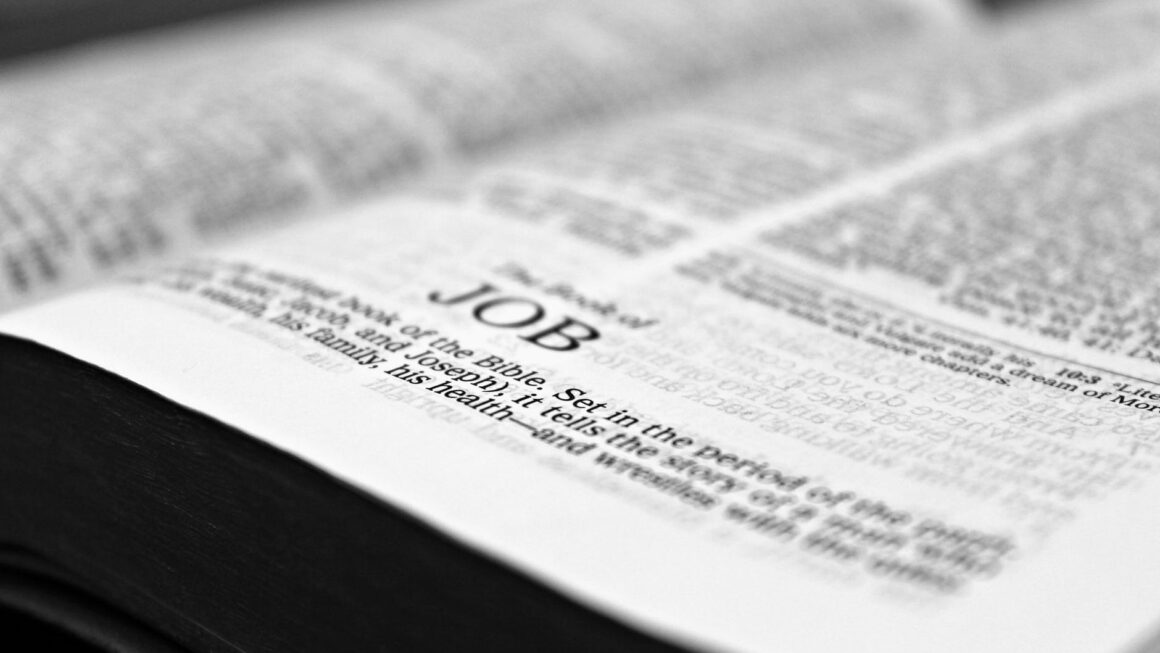Monsters are hot. It seems that networks are producing more and more monster shows: Penny Dreadful, The Walking Dead, and The Vampire Diaries, just to name a few. Monsters have escaped the fetters of the horror genre and broken free into blockbusters. Even classical works are being rewritten by mixing monsters with century’s old texts, to create new works and their film adaptations: Pride and Prejudice and Zombies.

In the ancient near east, monsters were everywhere, including ancient religious texts. The beasts of Daniel and Revelation, the giants of Genesis 6, the evil spirits, and people possessed by them are all examples of monsters and the monstrous immediately present in Biblical writings. Moving to extra-canonical works the examples are even more apparent: the tortures and tortured souls in the early Christian apocalypses, Lilith, and primordial beasts such as Leviathan and Behemoth. The monstrous nature of some of these is immediately evident in their embodiment (e.g. giants). Others are monstrous in geography or location (e.g. tortured souls) and behaviour (e.g. demon-possessed humans). All are monstrous in the impact they have on the audience, they embody otherness, threaten commonality, yet strangely attract.
What are monsters?
Defining monsters or the monstrous is decidedly difficult. The term “monster” has, in contemporary times, come to mean anything imaginary that is unnatural, frightening or excessively large. In different times monsters assumed different guises. Often, monsters are ill-constructed of mismatching parts, grotesque in their overabundance of certain organs or qualities.
Whatever the monster might be, it was a culture that designed it that way.1 So-called Monster Studies examines the roles that monsters and the monstrous play in culture: it is ‘a method of reading cultures from the monsters they engender.’2
Liminality and the Other
Culturally, monsters play an important role. They look different, they think differently, they act differently. As such they define the limits of “normal.” Wholly marginalised, they stand on the abyss of what is culturally acceptable and what is not. Beyond generally excepted ethics and aesthetics, they police ‘the boundaries of culture, usually in the service of some notion of group “purity”.’3
This delimiting role of the monstrous does not solely account for its permanent presence in cultural texts: monsters are found in texts from all ages and cultures. The monster is horrifically attractive. 4 Texts focussing on the monstrous often contain a tripartite structure in which first the monster is admitted. Then the monster is entertained and is entertaining. Finally, the monster is expelled. Entertaining the monstrous in texts is a safe manner to both describe and discourage socially unacceptable behaviour. Behaviour, that is, which remains unconsciously attractive.5 The entertaining nature of the monstrous shows that the monster is both distrusted and desired, both loathed and envied.

Temporality is key to monsters. The monster is given a temporary existence in a clearly defined space. Carnival and Halloween are contemporary cultural instances in which monstrosity is given a defined temporal existence. The monstrous exists in the text, but only during the act of reading is the monster given life. Once the predetermined time has passed, the monster disappears. Order is restored, good is distinguished from evil and the self from the other. For this is the fundament of the monster. As the monster is principally defined as being different to oneself, the monstrous becomes a symbol for everything that is wholly different from how one wishes the self were. The dichotomy between representing otherness and representing desire shows an important characteristic of the monster. it reflects ‘back parts of ourselves that are repressed’.6 The monster, entertaining as it is, grows to show us that we too are monstrous. The monster is most deeply disturbing as it is neither ‘wholly self nor wholly other’.7 As the monster portrays unacceptable behaviour, it models our – often, by necessity, deeply hidden – unacceptable thoughts and actions.
Do Monsters Exist?
Finally, in its refusal to be categorised it is moot to attempt to put monsters in fully detailed categories. Questions such as ‘Are these monsters imaginary or physical?’, ‘Are they allegorical?’, ‘Are monsters nothing more than our subconscious emotions, fears, or prejudices?’ are not useful. The value of monsters is shown in Cohen’s answer to the question ‘Do monsters really exist?’: ‘Surely they must, for if they do not, how could we?’8 Monsters, real or not, allegorical or not, manifestations of our subconscious or not, are cultural productions. As such, through an analysis of the monsters and monstrous present in a text, we can learn about the culture in which this text was produced and transmitted. As such the text becomes a witness to a social milieu, which is in part defined by the monsters it fears.

A Case Study in Monsters
Somewhere in the second century of the Common Era, The Testaments of the Twelve Patriarchs reached their final form. A Christian author/editor created a book consisting of twelve farewell speeches, partly based on earlier texts and traditions. Each of the sons of Jacob, the patriarchs of the twelve Jewish tribes, was given a speech where he looked back on his life, prophesied about the future, and give his children advice for their lives. The advice revolves around the Christian double commandment: Love God and love your neighbour. These Testaments are full of monsters. Not physical monsters, spiritual ones. The invisible forces of darkness, often called evil spirits, are depicted having a very direct and powerful influence on the life of each person. They can influence the most important part of a human: the mind. The Testaments focus on the mind is some detail: each person consists of a human spirit that is constantly influenced by both good and evil spirits. Each person has to make sure that her mind does not become influenced by the evil spirits so that she can keep living a righteous life.
Monstrous Body
The Testaments describe the bodily nature of humans in the Testament of Ruben, the first testament. At creation, God gave mankind eight spirits that make up human nature: life, sight, hearing, smell, speech, taste, procreation and intercourse, and sleep. Soon after that Satan, God’s opponent, mixed his spirit with these and eight evil spirits were brought into being: fornication, greed, battle, flattery and trickery, arrogance, lying, unrighteousness, and sleep.9 These evil spirits are associated with various part of the body. Fornication comes from the reproduction organs, greed from the stomach, battle from the liver and gall bladder, etc. Thus certain parts of a person’s body can be associated with the forces of evil. In this way the spirit and the body are interconnected.
The association of evil actions with specific parts of the body, is a theme that is maintained throughout the Testaments. When Simeon plans to kill his brother Joseph, his hand withers for five days. The part of the body that is associated with the sin outwardly manifests itself as monstrous. The envisioned deed of the part of the body is horrible, but not only that, even the appearance of the part of the body is terrible.
Gad explains in his testament how we should understand this: ‘for by the very same things by which a man transgresses, by them is he punished’ (Testament of Gad 5.10). This seems to imply that God seeks a fitting and somewhat ironic punishment, but the Testaments require more nuance to this. If Gad’s hatred for Joseph arises in his liver, that is if the evil spirit manifests in that specific organ, it stands to reason that this organ will be influenced by that spirit. Therefore, any consequences of anger will focus on that specific organ.
Monstrous Mind
The forces of evil can influence more than just parts of the body. Staying with Simeon, we read how jealous he was of Joseph. The spirit of jealousy tortured him. His body, mind, and soul were agitated. Jealousy deluded and devoured him. He would awaken to confusion. He could not think clearly, his mind was paralysed. Eventually, he concludes:
And even in sleep desire for evil appears and devours him. It confuses his soul with evil spirits, startles the body, and wakes up the mind in confusion. Thus, he appears to others as if possessed by an evil and poisonous spirit.
(Testament of Simeon 4.9)
The last sentence is key. He appears to others as someone possessed by an evil spirit. A person under the influence of the forces of darkness, that is a person whose mind has been taken over by the monstrous, such a person will appear to others as being monstrous.

Manifesting Monsters
Through these two examples, we can see the power of monsters in the Testaments. The Testaments are, as we discussed earlier, predominantly interested in each person’s mind. The mind has to keep making good decisions. The monsters are not physically present and can have no physical influence on the world. But, mankind can function as a means through which the invisible monstrous manifests itself in the visible world. The great danger that the Testaments wishes to warn their audience about is the other. Monsters are the other made flesh, but each person could also become the other. A person can cross the border towards the monstrous, becoming a monster herself; with monstrous limbs and a monstrous appearance. In the Testaments the other is not a group of people marginalised, but an aspect of human nature, and thus a part of each person. As a person slowly becomes the other, she no longer is herself or even that which defines her. As one lets oneself go over to the dark side, one slowly becomes the other, losing all hope of remaining oneself. In this way she becomes everything she hates.
The basis of the Testaments ethics is closely related to this. It is mankind that makes the opponent visible in the world. The ethereal monster becomes incarnate in the deeds, attitudes and even bodies of people led astray. This struggle of not only doing the opponents will, but becoming a champion of the monstrous itself is the basis of the ethical exhortation in the Testaments. The motivation for the ethics is the call to the audience not to become exactly that, which they do not want to be. The monster must stay out of the community and, preferably, out of the world too.
This post was originally posted on Angels and Apes. A Dutch language version appeared in Leiden University’s magazine for classici Frons. Angels and Apes is an often-more-than-weekly-blog, maintained by Megen de Bruin-Molé, a PhD researcher at Cardiff University, on Monsters, Steampunk, Neo-Victorianism, and all manner of legitimately interesting topics.
- Jeffrey Jerome Cohen, “Monster Culture (Seven Theses),” in Monster Theory: Reading Culture, ed. Jeffrey Jerome Cohen (Minneapolis, Minn.: University of Minnesota Press, 1993), 4. ↩
- Cohen, “Monster Culture”, 3. ↩
- Cohen, “Monster Culture”, 8. ↩
- Margrit Shildrick, Embodying the Monster: Encounters with the Vulnerable Self (London: Sage, 2002, 5. ↩
- Richard Kearney, Strangers, Gods, and Monsters: Interpreting Otherness (London: Routledge, 2003), 5. ↩
- Shildrick, Embodying the Monster, 3. ↩
- Shildrick, Embodying the Monster, 3. ↩
- Cohen, “Monster Culture,” 20. ↩
- Tom de Bruin, The Great Controversy: The Individual’s Struggle between Good and Evil in the Testaments of the Twelve Patriarchs and in Their Jewish and Christian Contexts, Novum Testamentum et Orbis Antiquus 106 (Göttingen: Vandenhoeck & Ruprecht, 2015), 109–110, 149–150. ↩


